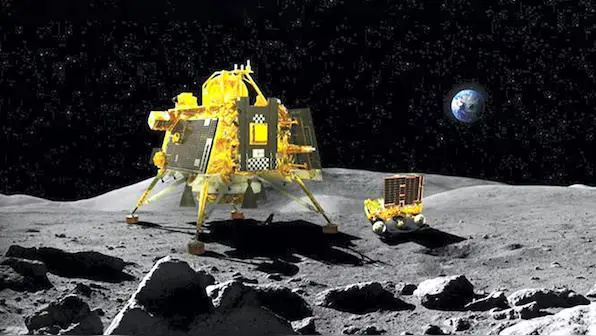The Pragyan rover from India’s Chandrayaan-3 moon mission has made significant discoveries on the lunar surface near its landing site. As reported by NDTV, the Vikram lander deployed the rover, which observed small rock fragments scattered around the rim, wall slopes, and floor of small craters in the southern high-latitude landing area.
Over the course of a single lunar day, Pragyan travelled approximately 103 metres.
These findings may significantly advance lunar exploration, corroborating earlier studies that suggested a gradual coarsening of rock fragments within the lunar regolith.
Weighing 27 kilograms, the Pragyan rover was equipped with cameras and instruments to analyse lunar soil. It proudly displayed the ISRO logo and the Indian tricolour flag on the lunar surface, the report added.
According to the findings, as the rover moved roughly 39 metres west of the landing site, named Shiv Shakti point by Prime Minister Narendra Modi, the number and size of rock fragments increased. The report claimed that a possible source of these rock fragments is a nearby crater about 10 metres in diameter.
A paper presented at the International Conference on Planets, Exoplanets and Habitability in Ahmedabad earlier this year suggested that this crater had excavated and redistributed the rock fragments around the landing site, which had been repeatedly buried and exposed by the lunar regolith overturning mechanism and small craters.


Leave a Reply